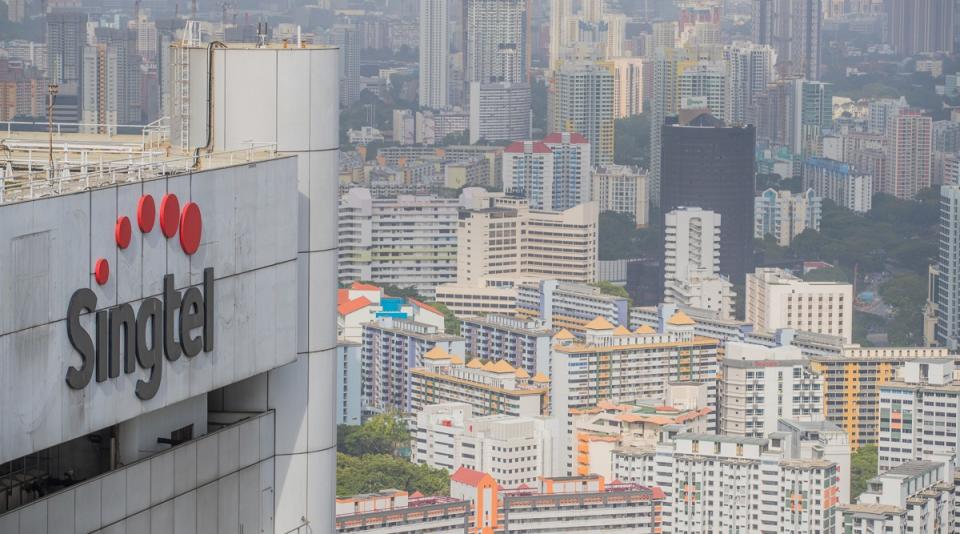Singtel among key telco players in SEA that can expand revenue streams through data centres: Bloomberg Intelligence

Analyst Chris Muckensturm says she expects the data centre market in SEA to grow by 17% in the next five years.
Data centres have been experiencing a surge in demand with the rapid rise of artificial intelligence (AI) and enterprises moving to digitalisation, says Bloomberg Intelligence analyst Chris Muckensturm.
“Southeast Asia (SEA) presents opportunities for data centre investments… [We] essentially expect capacity to rise by 11% to 28% a year on average from 2022 to 2028,” she adds.
In her presentation during Bloomberg Intelligence’s media roundtable on June 13 (check), Muckensturm sees the region emerging as an “attractive destination” for investments due to its neutral position amid geopolitical tensions and its high internet penetration rate. Southeast Asia’s youthful demographic that’s driving digitalisation and data consumption is another factor, Muckensturm notes.
In addition, some governments have introduced incentives such as tax rebates and the easing of land use restrictions to entice investments in data centres. The incentives are also done to keep government and public data onshore, she adds.
Overall, the analyst expects the data centre market in SEA to grow by 17% in the next five years, compared to a 12% growth in other regions.
Asian telecommunication companies (telcos) are also expected to tap on opportunities from the rise of AI and digitalisation to expand their revenue stream as well as unlock value from their data centre assets.
“The sector is attracting lot of investments. That could essentially provide a potential rerating catalyst for telcos who are willing or looking to monetise their data centre assets,” says the analyst.
“We’ve seen assets fetching nine times and up to 49 times EV/ebitda based on recent deals,” she adds, noting that the valuations of Asian telcos are about 10 times in comparison.
Greater exposure to data centres will also allow telcos to shift away from its core mobile business, where revenue growth has been slowing to low-single digits, Muckensturm continues.
Among the Asean players, the analyst names Singapore Telecommunications Z74 (Singtel), Telekom Malaysia, Philippines telco PLDT and Thailand’s Advanced Info Service (AIS) as the “key players in the region”. These companies will be able to leverage their data centre infrastructure and connectivity by offering more digital enterprise solutions, she notes. These companies can also consider growing its enterprise business, which are becoming a growth engine for telcos, she adds.
“Growing data centre capacity is also crucial in the rollout of 5G, as we've seen adoption being more prevalent from enterprise customers, and mainly mostly because of use cases that are drawing on data intensive applications.”
Asia gateway for hyperscalers connecting international traffic ‘bodes well’ for telcos
Telcos are also set to benefit from Asia emerging as a gateway for hyperscalers to connect with international traffic.
To Muckensturm, this has the potential to spark more partnership with telcos and accelerate the digitalisation of local enterprises.
She suggests that collaborations between telcos and service cloud providers such as Amazon Web Services (AWS), Google Cloud and Microsoft Azure will enable telcos to integrate advanced edge computing and AI capabilities within their network. In turn, these providers may also tap on the telcos’ domestic footprint and connectivity infrastructure.
“It's worth noting that hyperscalers tend to be key customers for the telcos that are offering data centre services, and typically come with high pricing power,” says the analyst.
More of them are also signing up for shorter-term contracts, which is essentially putting pressure on the telcos’ margins; as such providers roll out their own facilities, Muckensturm expects there to be a slight easing of margin frictions.
In her view, partnering cloud service providers will make telcos enterprise business and solution offerings more attractive. “We expect this to potentially boost the telcos’ enterprise business revenue by around double digits in the near term,” she says.
On June 18, Singtel announced that its regional data centre arm, Nxera, has entered into a joint venture (JV) with Telekom Malaysia (TM) to develop data centres in Malaysia.
“This strategic partnership aims to serve the needs of hyperscalers, next-generation AI application providers and enterprises pursuing accelerated digitalisation and cloud in the region,” reads the joint release issued by Nxera and TM.
On the same day, Singtel said that it will invest $1.75 billion in ST Telemedia Global Data Centres (STT GDC) through a consortium led by global investment firm, KKR.
The initial $1.75 billion investment will be transacted via redeemable preference shares (RPS) with detachable warrants. Once the warrants are exercised in full, the consortium will invest another $1.24 billion.
Under the subscription agreement entered into by Singtel with STT GDC and KKR, Singtel will subscribe for $400 million in redeemable non-voting preference shares in the share capital of STT GDC and be issued detachable warrants.
According to the release, the investment proceeds will be used to “further advance” STT GDC’s position in the markets it operates in. The proceeds will also support STT GDC’s continuing international expansion and growth plans through organic and inorganic strategies. ST Telemedia will remain STT GDC’s majority shareholder after the transaction.
See Also:
Click here to stay updated with the Latest Business & Investment News in Singapore
Get in-depth insights from our expert contributors, and dive into financial and economic trends

 Yahoo Finance
Yahoo Finance 